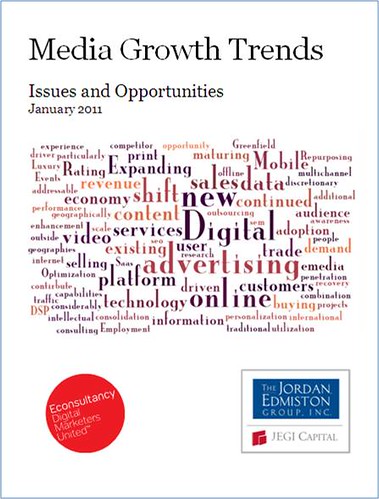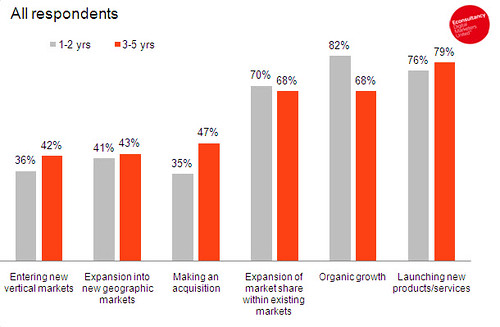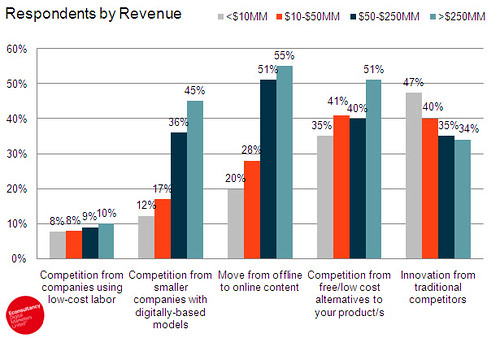Posted 19 January 2011 11:47am by Patricio Robles with 9 comments
 Becoming a freelance consultant or service provider is easy, but turning a profit can be difficult.
Becoming a freelance consultant or service provider is easy, but turning a profit can be difficult.
One of the lessons learned through experience: profitability often has a lot more to do with avoiding the wrong clients than it does finding a never-ending stream of new clients.
Fortunately, the wrong clients typically come in several well-defined and easily identifiable shapes and sizes.
Here are the top five clients you should consider avoiding like the plague if you hope to be profitable.
The Fisherman
 If you're a web designer or developer, chances are you've met The Fisherman. He often appears to be a serious client, and he may very well be one, but early on in your initial dialog it becomes clear: he's going to want a lot out of you before he's ready to officially move forward with paying work.
If you're a web designer or developer, chances are you've met The Fisherman. He often appears to be a serious client, and he may very well be one, but early on in your initial dialog it becomes clear: he's going to want a lot out of you before he's ready to officially move forward with paying work.
For instance, if you're a web developer, The Fisherman may come to you without a project spec, and without a clear idea of the technologies he should use. So he'll ask you to help him figure out what he needs, gratis, of course, so that he can do you the favor of moving ahead with the project after you've given him a four-course meal of your expertise.
Why You Should Avoid The Fisherman: Unless you can get him to pay for your expertise up front, you'll provide far more value to The Fisherman than you will likely be compensated for -- if he actually hires you to implement, which is always a big if.
The Mime Artist
 Communication is a crucial part of any client relationship, and it's a two-way street. Clients should expect that their service providers are capable communicators, but clients should also understand that their ability to communicate is a prerequisite for project success too.
Communication is a crucial part of any client relationship, and it's a two-way street. Clients should expect that their service providers are capable communicators, but clients should also understand that their ability to communicate is a prerequisite for project success too.
With The Mime Artist, communication is so difficult that you feel like you're trying to figure out what's going on sans the spoken or written word. As a result, you're unable to get a clear understanding of what the client needs and wants.
Why You Should Avoid The Mime Artist: Trying to communicate with a client that is unable to communicate effectively is one of the best ways to damage your head without banging it into a wall repeatedly. It's also a great way to spend time on a project that is likely to leave everyone disappointed in the end.
The Deluded
 Many freelance web developers have seen The Deluded. He's the client who wants you to build a site that will combine the features of Facebook, YouTube, Flickr, Digg, Napster and every other popular site ever built since 1998, to create a website design in exchange for equity because he's going to revolutionize an industry and sell his site for a lot of money within a year, etc.
Many freelance web developers have seen The Deluded. He's the client who wants you to build a site that will combine the features of Facebook, YouTube, Flickr, Digg, Napster and every other popular site ever built since 1998, to create a website design in exchange for equity because he's going to revolutionize an industry and sell his site for a lot of money within a year, etc.
In other words, The Deluded is usually completely out of touch with reality and wants you to become a part of his impossibility.
Why You Should Avoid The Deluded: Simply put, you can never deliver for The Deluded. Fortunately, this client is easy to spot and most experienced service providers do manage to avoid him.
The Spouse
 Clients deserve a certain level of respect and attention, particularly when they're paying good money. But some -- The Spouses -- expect a little bit too much. You probably have some experience with these clients: they send emails for the sake of sending emails, like to phone you a few times a day just to see how things are going, and want you to meet frequently on-site because they 'like' interaction.
Clients deserve a certain level of respect and attention, particularly when they're paying good money. But some -- The Spouses -- expect a little bit too much. You probably have some experience with these clients: they send emails for the sake of sending emails, like to phone you a few times a day just to see how things are going, and want you to meet frequently on-site because they 'like' interaction.
In some cases, you may even half expect to see them when you arrive at home because they find a way to make themselves a fixture in your life. Hence the name, The Spouse.
Why You Should Avoid The Spouse: There's a fine line between a client who needs a little bit of hand-holding and a client who isn't hugged enough. When you encounter the latter, it usually means that you'll spend an inordinate amount of time not getting work done, which can eventually harm your other client relationships.
The Cheapskate
 Everybody loves bargains, and if you're a service provider, chances are clients and prospective clients will frequently ask you to provide them in some form or another. The Cheapskate takes bargain-hunting to another level, however, as he seeks to maximize how much he gets and minimize how much he pays you.
Everybody loves bargains, and if you're a service provider, chances are clients and prospective clients will frequently ask you to provide them in some form or another. The Cheapskate takes bargain-hunting to another level, however, as he seeks to maximize how much he gets and minimize how much he pays you.
In many cases, The Cheapskate will try to change the terms of your engagement afterthey've been agreed upon. Particularly dangerous is The Cheapskate who has mastered the subtle art of scope creep, and who can sometimes make you feel guilty about not doing extra work for free when he requests it.
Why You Should Avoid The Cheapskate: Working with clients who want a 'great' price rather than a solid value is rarely a profitable exercise.
Photo credits:
Pink Sherbet Photography via Flickr.
radcarper via Flickr.
Ctd 2005 via Flickr.
CarlosMendozaPhoto via Flickr.
Bill Ward's Brickpile via Flickr.
greggoconnell via Flickr.










 Becoming a freelance consultant or service provider is easy, but turning a profit can be difficult.
Becoming a freelance consultant or service provider is easy, but turning a profit can be difficult. If you're a web designer or developer, chances are you've met The Fisherman. He often appears to be a serious client, and he may very well be one, but early on in your initial dialog it becomes clear: he's going to want a lot out of you before he's ready to officially move forward with paying work.
If you're a web designer or developer, chances are you've met The Fisherman. He often appears to be a serious client, and he may very well be one, but early on in your initial dialog it becomes clear: he's going to want a lot out of you before he's ready to officially move forward with paying work. Communication is a crucial part of any client relationship, and it's a two-way street. Clients should expect that their service providers are capable communicators, but clients should also understand that their ability to communicate is a prerequisite for project success too.
Communication is a crucial part of any client relationship, and it's a two-way street. Clients should expect that their service providers are capable communicators, but clients should also understand that their ability to communicate is a prerequisite for project success too. Many freelance web developers have seen The Deluded. He's the client who wants you to build a site that will combine the features of Facebook, YouTube, Flickr, Digg, Napster and every other popular site ever built since 1998, to create a website design in exchange for equity because he's going to revolutionize an industry and sell his site for a lot of money within a year, etc.
Many freelance web developers have seen The Deluded. He's the client who wants you to build a site that will combine the features of Facebook, YouTube, Flickr, Digg, Napster and every other popular site ever built since 1998, to create a website design in exchange for equity because he's going to revolutionize an industry and sell his site for a lot of money within a year, etc. Clients deserve a certain level of respect and attention, particularly when they're paying good money. But some -- The Spouses -- expect a little bit too much. You probably have some experience with these clients: they send emails for the sake of sending emails, like to phone you a few times a day just to see how things are going, and want you to meet frequently on-site because they 'like' interaction.
Clients deserve a certain level of respect and attention, particularly when they're paying good money. But some -- The Spouses -- expect a little bit too much. You probably have some experience with these clients: they send emails for the sake of sending emails, like to phone you a few times a day just to see how things are going, and want you to meet frequently on-site because they 'like' interaction. Everybody loves bargains, and if you're a service provider, chances are clients and prospective clients will frequently ask you to provide them in some form or another. The Cheapskate takes bargain-hunting to another level, however, as he seeks to maximize how much he gets and minimize how much he pays you.
Everybody loves bargains, and if you're a service provider, chances are clients and prospective clients will frequently ask you to provide them in some form or another. The Cheapskate takes bargain-hunting to another level, however, as he seeks to maximize how much he gets and minimize how much he pays you.